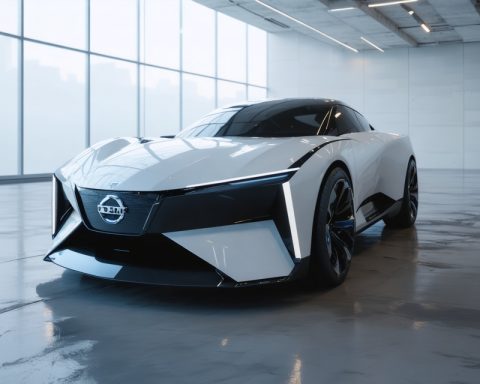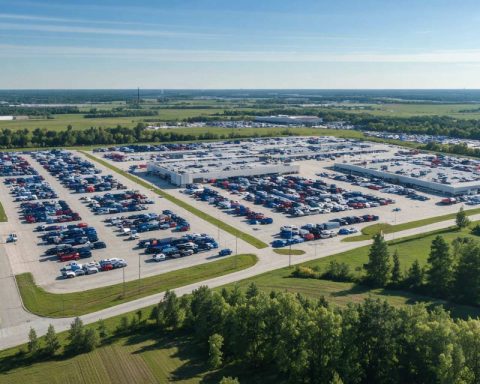- Russia is pushing for an EV transformation with government mandates requiring 5% of residential parking dedicated to electric and hybrid vehicles with charging capabilities.
- Significant investment of $10.5 billion is planned by 2030 to bolster EV and hydrogen vehicle infrastructure, aiming for 20,000 new charging stations and 1.5 million EVs.
- Major cities like Moscow and St. Petersburg lead in EV infrastructure development, with incentives such as purchase discounts and tax breaks to encourage adoption.
- Despite the rise in EV sales, harsh winters, economic limitations, and reliance on Chinese parts hinder broader adoption and affordability.
- Russia’s national automotive industry struggles with local production capabilities, affecting the cost and appeal of EVs to consumers.
Russia finds itself at the crossroads of a transportation revolution, nudged by government initiatives to weave electric vehicles (EVs) into the fabric of everyday life, albeit at a pace reminiscent of its expansive terrain—slow and steady. The Ministry of Construction has rolled out a forward-thinking mandate, urging residential developers to reserve a slice of parking real estate for electric and hybrid vehicles. This commitment to at least 5% of parking slots, powered by charging stations of no less than 11 kilowatts, aims to spark a transformation, ensuring smoother journeys into a future where clean energy dominates.
This is not Russia’s first attempt to fire up the engines of change. Past policies laid the groundwork for a robust charging infrastructure, supplemented by subsidies stretching into 2030. Cities like Moscow, St. Petersburg, Kazan, and Yekaterinburg stand as bustling hubs for new charging stations, leading the charge in the nation’s electrification journey. Incentives such as direct purchase discounts, tax breaks, and toll waivers are designed to lighten the financial load on consumers who wish to embrace this cleaner motoring future.
Russia’s ambition doesn’t stop at personal vehicles. The grand strategy comprises a sweeping procurement plan to electrify state vehicle fleets and public transportation, embedding sustainability into the arteries of public life. The government has earmarked a monumental $10.5 billion investment in both EVs and hydrogen vehicles by 2030, a plan that includes planting 20,000 new charging stations and swelling the EV population to a formidable 1.5 million.
Though Russia’s market has witnessed a small ‘electric wave’, with 2024 marking a historic high of 17,805 new EV sales—an impressive 26.4% increase from 2023—the overall scale remains modest. In stark contrast to China’s monthly automotive figures, Russia’s annual EV sales are dwarfed. Geographical and economic constraints, alongside stringent local manufacturing mandates, keep the electric surge from reaching its full potential.
Harsh winters pose an unyielding challenge to electric vehicles, whose batteries are notoriously temperamental in freezing climates. Coupled with sparse infrastructure spread across its vast expanse, Russia’s electric ambitions face a steep uphill climb. The heartbreak of a 68% sales slump in early 2025 underscores the fragile and volatile nature of this nascent market, with electric cars accounting for only 0.8% of all vehicles sold.
The national automotive industry grapples with a technological handicap, lacking the capacity for indigenous EV production. Assembling cars from Chinese-imported parts adds to cost inefficiency, a hurdle further complicated by geopolitical tensions and domestic policies that are not particularly kind to imports. Such dynamics have bred an environment where high vehicle costs dampen consumer enthusiasm.
As Russia navigates these high-stakes intersections of innovation and infrastructure, the quest remains: can it harness the momentum of governmental resolve to drive a green revolution that endures beyond the urban centers and revives in its vast hinterlands? The answer lies in the balance between ambition and grit—a journey only time will unravel.
Can Russia Overcome Its EV Challenges? Exploring the Future of Electric Vehicles in Russia
Introduction
Russia stands at the crossroads of an electric vehicle (EV) revolution, propelled by significant government initiatives aiming to integrate EVs into daily life. Recent mandates from the Ministry of Construction require developers to allocate parking spaces for EVs, coupled with charging stations, reflecting a strong push towards cleaner energy solutions. However, the journey is fraught with challenges unique to Russia’s geographical and economic landscape. Let’s explore the surrounding ecosystem, potential market dynamics, and future prospects of Russia’s electric vehicle ambitions.
Additional Insights and Trends
1. Market Dynamics and Forecast
Despite significant subsidies and incentives, Russia remains an emerging player in the global EV market. The country has set a target of 1.5 million EVs by 2030, supported by $10.5 billion in investments. However, the fragmented distribution of infrastructure and the dominance of imported vehicle components create obstacles for expansion. According to analysts, achieving a more substantial market share will require enhancing domestic production capacities and overcoming current economic hurdles.
2. Technological and Production Challenges
Russia’s EV industry faces a technology gap. Most vehicles are assembled from imported Chinese parts, leading to high costs. Establishing a robust local manufacturing ecosystem is essential to reduce reliance on imports and improve cost efficiency. The government might consider partnerships with international EV leaders to transfer technology and expertise into the local market.
3. Environmental and Climatic Concerns
Russia’s harsh winter climate presents significant technical obstacles for EV batteries, which can degrade in cold temperatures. Innovations in battery technology, including more resilient and temperature-resistant cells, are critical for increasing EV adoption across the country. Integrating advanced thermal management systems may improve performance and reliability.
4. Consumer Sentiment and Adoption Barriers
Consumer enthusiasm remains tepid due to high vehicle costs and inadequate charging infrastructure in rural areas. Expanding public awareness programs and offering more substantial purchase incentives could shift public perception and drive adoption.
5. Policy and Regulatory Landscape
The Russian government’s commitment to extending subsidies and tax breaks until 2030 is promising for potential buyers. Moreover, integrating EVs into public transportation will ensure broader exposure. However, seamless collaboration between federal and local governments is vital to address infrastructure disparities.
How-To Steps & Life Hacks for Embracing EVs in Russia
– Choosing the Right EV: Evaluate offers from multiple dealers to find deals that maximize incentives and rebates.
– Winterizing Your EV: Invest in battery heating systems and all-weather tires to maintain efficiency during extreme cold.
– Understanding Infrastructure Availability: Use apps to find the nearest charging stations and plan trips accordingly, especially in remote areas.
Pros & Cons Overview
– Pros:
– Significant government subsidies and financial incentives
– Growing network of charging stations in urban centers
– Environmental benefits with reduced emissions
– Cons:
– High vehicle costs due to reliance on imports
– Cold climate impacting battery performance
– Fragmented infrastructure outside major cities
Conclusion and Recommendations
For Russia to successfully transform its automotive landscape, bridging the gap between policy ambition and customer needs is crucial. Nations with similar climates, like Norway, offer valuable lessons in policy and technological adaptation. Continued investment in both infrastructure and education will be pivotal.
Actionable tips for Russian consumers and industry stakeholders include leveraging all financial incentives, participating in battery tech innovations, and fostering international partnerships for knowledge exchange. The road to sustainable transportation in Russia is a marathon, not a sprint, demanding perseverance and strategic adaptation.
For more information on electric vehicle trends and insights, visit Tesla or BYD.














